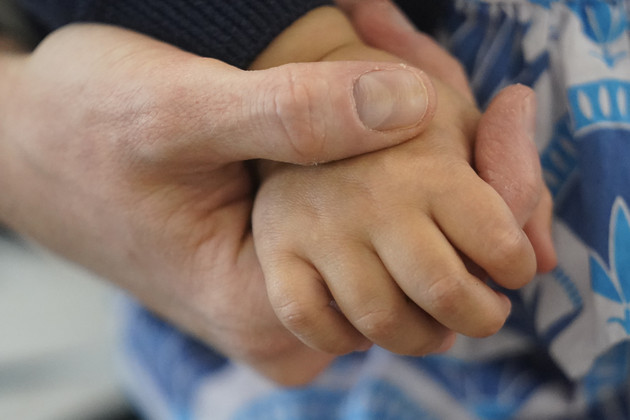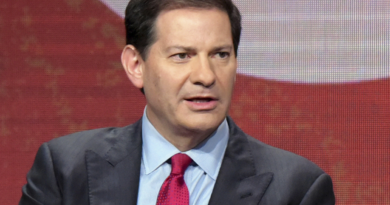Biden’s vision for a rejuvenated child care system is about to hit a wall
The emergency funding, approved early in Biden’s presidency, helped 80 percent of providers nationwide pay down debts and hold onto employees, averting a wave of program closures and child care shortages.
Now, though, that financial support is coming to an end. The White House signaled earlier this month it wouldn’t prioritize the child care program in a year-end funding fight. That’s frustrated advocates who have sought up to $16 billion in replacement money. And with little prospect of Congress creating a new backstop on its own, many Democratic lawmakers and allies warn the cutoff will usher in a politically damaging period of rising prices and dwindling options for working families most in need.
“We are going to see a lot of families struggle,” said Indivar Dutta-Gupta, president of the anti-poverty advocacy organization Center for Law and Social Policy. “There’ll be a lot of tough tradeoffs across the board, and there’s no good choices here.”
The funding cliff comes at a particularly tricky moment for Biden, who has struggled to sell the public on his economic record despite a monthslong run of progress in cooling inflation while avoiding job losses. Even with recent upticks, inflation is still hovering near 3 percent over the past year — down sharply from its near-record levels last June.
But daycare and preschool prices remain stubbornly high, rising roughly 6 percent over the same timeframe, according to the most recent Labor Department data. Those costs — which typically run families more than $10,000 a year on average — are now likely to creep higher as child care programs compensate for the drop-off in federal aid, hitting American parents already fixated on the increase in everyday expenses. One projection widely circulated among Democrats estimates the funding expiration could boot as many as 3 million children from their programs, costing families up to $9 billion in total annual earnings.
“It’s going to be really unfortunate timing,” said Whitney Pesek, director of federal child care policy at the National Women’s Law Center. “Child care prices are going to be going up heading into the 2024 election, when everyone’s running on the economy.”
That financial stress also threatens to dent other elements of the post-pandemic recovery that Biden is making central to his reelection campaign. Advocates warn that the rising costs could force some parents to quit their jobs to stay home rather than pay for child care, potentially driving a reversal in the record levels of women who have returned to work in recent months.
Thousands of care facilities that were struggling to stay afloat amid labor shortages and escalating expenses even before Covid may close altogether, resulting in job losses across the sector. And waiting lists for those that stay open are likely to get longer, exacerbating inequality for families particularly in swathes of the U.S. considered child care “deserts” due to their lack of options.
“We’re going to lose them in every industry, in every occupation, in every sector,” labor economist Kathryn Edwards said of the nearly 70 percent of mothers with young children who are also juggling jobs. “It’ll just add pressure to our labor force.”
Ahead of the Sept. 30 cutoff, some states have offered a preview of what could come in the case of a nationwide fallout. In Wisconsin, the battleground state Biden visited earlier this month to promote his economic agenda, payments to providers have already been cut in half. Democratic Gov. Tony Evers is now calling for a special legislative session to address what he termed a “looming collapse” of the state’s child care industry.
Other states, like Missouri and Connecticut, are scrambling to test new child care models of their own to fill the hole left by the federal government.
Despite the warnings, White House aides are largely resigned to watching the industry’s financial aid dissolve without a new stopgap in place to cushion the blow.
The administration declined to seek fresh child care money as part of a supplemental funding request earlier this month, passing up what is widely seen as the only chance to make the case for fresh aid. Democratic lawmakers leading the push say there’s little chance now that a divided Congress will add child care funding to already-volatile spending negotiations with a government shutdown looming.
The $16 billion is “more than a heavy lift — it is unlikely,” said House Appropriations Chair Rosa DeLauro (D-Conn.). “We won’t be able to serve as many kids. We won’t be able to provide providers with the help that they need just to carry on.”
Biden officials argued that they needed to keep their funding request tightly focused ahead of negotiations with Republicans who have already signaled a willingness to shut down the government over demands for spending cuts. The package was limited only to emergency needs for the next few months.
In a letter to House Speaker Kevin McCarthy detailing the funding request, top budget official Shalanda Young did note that the administration supported “continued funding” for child care access as well, though she did not offer specifics.
Senate Appropriations Chair Patty Murray (D-Wash.) and House Democratic whip Katherine Clark (Mass.) said in interviews they are exploring standalone legislation that would enact the $16 billion.
But even they acknowledge that’s a long shot. The administration has downplayed the prospect of new short-term federal aid that comes anywhere near the historic Covid-era investments, with one official calling the current program a temporary fix meant only to keep facilities afloat during the worst of the pandemic. Republicans, meanwhile, have questioned how the cash was spent and expressed skepticism that more is needed.
“Democrats are promoting additional federal dollars under the guise of crisis,” Sen. Bill Cassidy (R-La.) said during a hearing this spring.
One potential compromise: a package of tax incentives that could spur employers to help fill the gap, though at nowhere near current levels. Both child care advocates and business groups including the U.S. Chamber of Commerce support the idea, which may be more amenable to Republicans.
The White House in the meantime has touted various administrative moves as evidence of its commitment to improving child care, including a proposal to cap families’ child care copays under an existing federal program. Biden has also pitched longer-term legislative proposals to make care more affordable, calling it in April “a fight I’m willing to have.”
Still, the administration’s reluctance to push for more immediate funding has frustrated child care advocates who count themselves among Biden’s biggest allies.
“Our job would be a lot easier convincing Congress if we had the White House strongly backing us up,” said Pesek, who dismissed the White House’s mention of child care in its funding request as simply “checking the box,” rather than any substantive commitment to the issue. “We really firmly believe we need the money. It’s not going to be addressed through an acknowledgment.”
Bruce Lesley, the president of advocacy group First Focus on Children, said White House officials cultivated close ties with the child care community back when Biden hoped to pass an overhaul of the sector as part of his sweeping Build Back Better proposal. That plan ultimately fell by the wayside in the face of opposition from centrist Sen. Joe Manchin (D-W.Va.) as negotiators streamlined the package into what would become the Inflation Reduction Act.
Biden officials have since focused their legislative efforts elsewhere. They also began to emphasize their commitment to “responsible” deficit and debt reduction as Republicans took control of the House.
But within the child care system, the core problems remain. Workers have yet to return to the sector at pre-pandemic levels, despite the stream of people joining the broader workforce over the past couple years. Even higher across-the-board wages, considered a central accomplishment of Biden’s economic agenda, mean fresh peril for child care facilities that often can’t afford to pay employees on par with what they can find elsewhere in the hot market for service jobs.
“It’s an example of a market failure where there has to be some government response,” Lesley said. “But we’re going the wrong way — and by neglect.”



